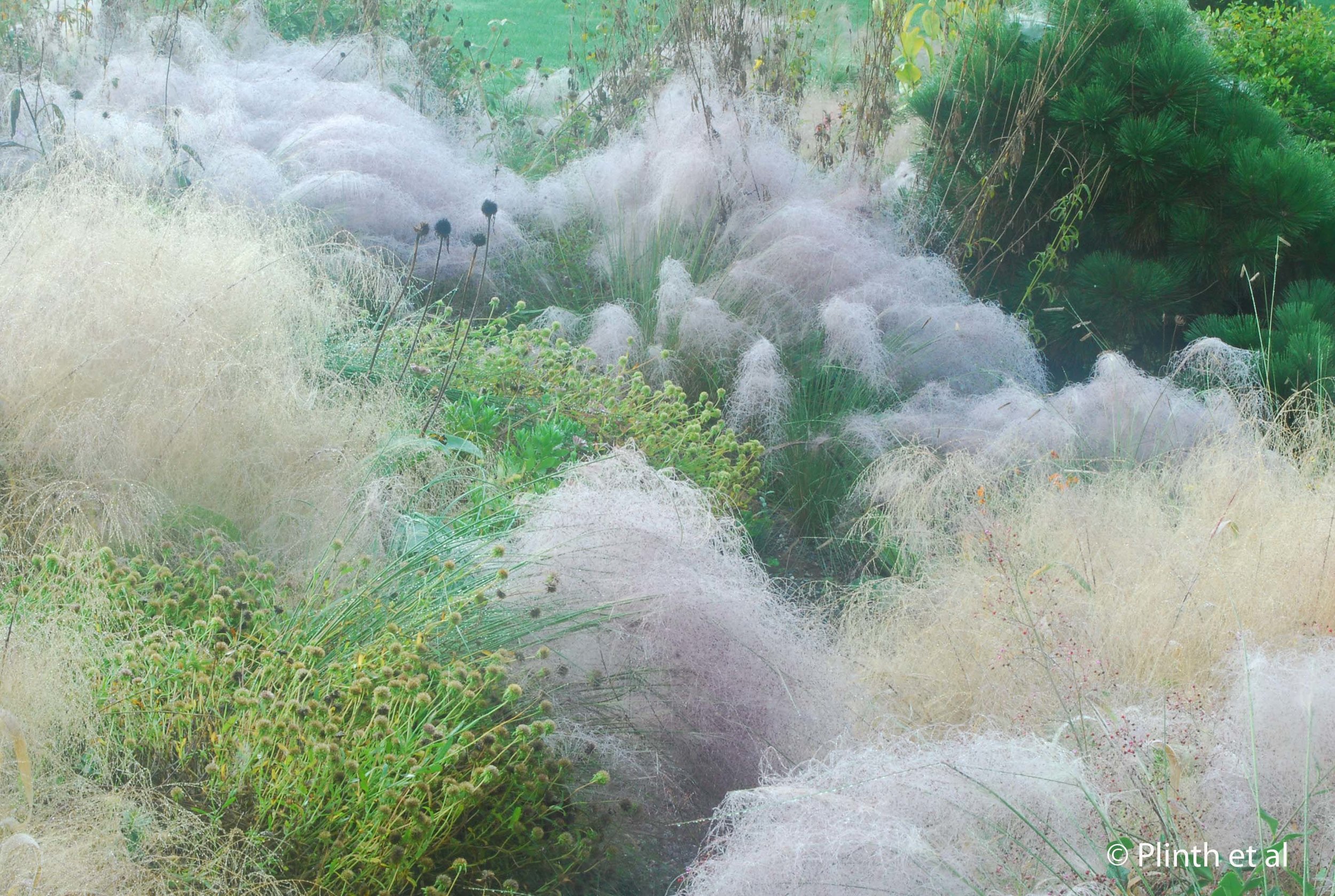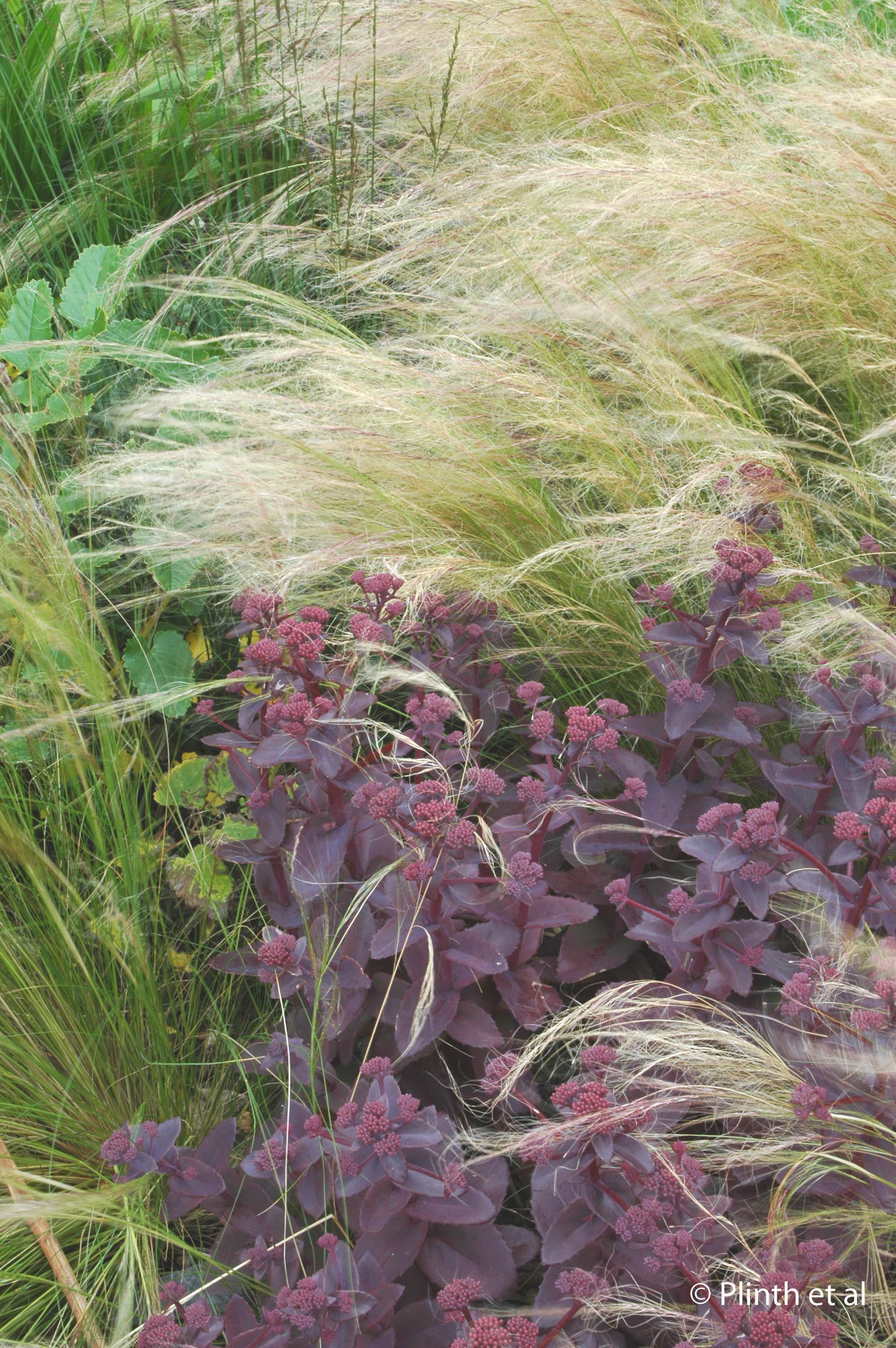Grasses are like annuals in which temperatures characterize their growing preferences. They are either cool-season or warm-season. Unfortunately this distinction is not clear when nurseries and garden centers sell containerized grasses, which often do not sell unless they flower. Either way, flowering grasses can be tricky to transplant because their energies are already devoted to flower and seed production rather than root production. It is more crucial to observe the differences between the cool-season and warm-season grasses. When cool temperatures and consistent precipitation prevail, cool-season grasses grow and flower best before they become dormant (browning-out is a telltale symptom in midsummer and early autumn). Therefore planting is best in spring to early summer. However, cool-season grasses tend to establish sooner than warm-season grasses.
Warm-season grasses prosper in hot months, albeit with a caveat - they do not reach their optimum best until their 3rd or 4th year since the first two to three years is focused on growth rather than flowering. It can be sobering for a gardener to order and plant these plugs or quart-size clumps, only to discover that the tufts of individual plants remain insignificant, betraying any sign of future magnificence promised. This impatience may be outweighed by the future burden of having to divide old clumps, especially that of Miscanthus. Planting is best in late spring as temperatures warm up and transition into summer.
Cool-season grasses include the following genera:
Achnatherum, Calamagrostis, Deschampsia, Elymus, Festuca, Helictrotrichon, Koeleria, Molinia caerulea, Nasella tenuissima, Seslera, Stipa
Warm-Season Grasses include:
Andropogon, Bouteloua, Calamagrostis brachytricha, Eragrostis, Hakonechloa , Miscanthus, Muhlenbergia, Panicum, Pennisetum, Spartina, Sporobolus heterolepsis, Schizachyrium, Sorghastrum


